For the 2025 school year, there are 4 public schools serving 1,582 students in Northern Lehigh School District. This district's average testing ranking is 4/10, which is in the bottom 50% of public schools in Pennsylvania.
Public Schools in Northern Lehigh School District have an average math proficiency score of 29% (versus the Pennsylvania public school average of 36%), and reading proficiency score of 50% (versus the 55% statewide average).
Minority enrollment is 25% of the student body (majority Hispanic), which is less than the Pennsylvania public school average of 39% (majority Hispanic and Black).
Overview
This School District
This State (PA)
# Schools
4 Schools
2,928 Schools
# Students
1,582 Students
1,668,648 Students
# Teachers
113 Teachers
124,158 Teachers
Student : Teacher Ratio
14:1
14:1
District Rank
Northern Lehigh School District, which is ranked within the bottom 50% of all 675 school districts in Pennsylvania (based off of combined math and reading proficiency testing data) for the 2021-2022 school year.
The school district's graduation rate of 85-89% has decreased from 95% over five school years.
Overall District Rank
#457 out of 684 school districts
(Bottom 50%)
(Bottom 50%)
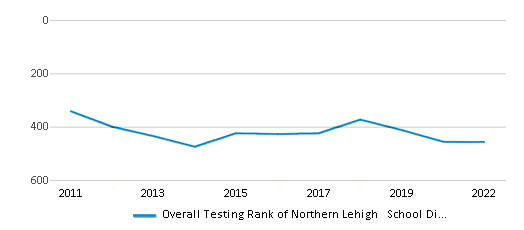
Math Test Scores (% Proficient)
29%
36%
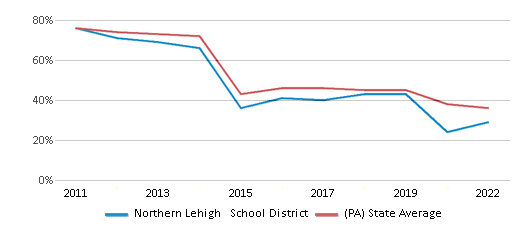
Reading/Language Arts Test Scores (% Proficient)
49%
55%
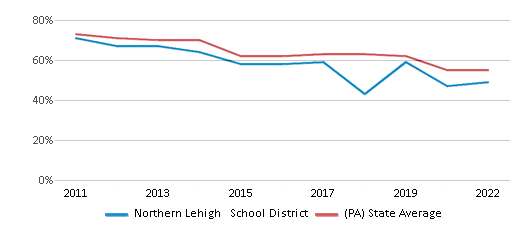
Science Test Scores (% Proficient)
51%
57%
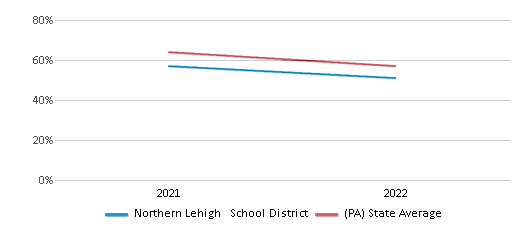
Graduation Rate
85-89%
87%

Students by Ethnicity:
Diversity Score
0.41
0.59
# American Indian Students
n/a
3,204 Students
% American Indian Students
n/a
n/a
# Asian Students
12 Students
78,034 Students
% Asian Students
1%
5%
# Hispanic Students
286 Students
249,018 Students
% Hispanic Students
18%
15%
# Black Students
39 Students
237,342 Students
% Black Students
2%
14%
# White Students
1,183 Students
1,011,502 Students
% White Students
75%
61%
# Hawaiian Students
2 Students
1,518 Students
% Hawaiian Students
n/a
n/a
# Two or more races Students
60 Students
88,750 Students
% of Two or more races Students
4%
5%
Students by Grade:
# Students in PK Grade:
-
8,485
# Students in K Grade:
129
114,122
# Students in 1st Grade:
140
120,768
# Students in 2nd Grade:
108
126,133
# Students in 3rd Grade:
119
120,907
# Students in 4th Grade:
126
125,578
# Students in 5th Grade:
130
126,001
# Students in 6th Grade:
119
126,714
# Students in 7th Grade:
117
128,950
# Students in 8th Grade:
117
129,786
# Students in 9th Grade:
126
141,323
# Students in 10th Grade:
130
138,358
# Students in 11th Grade:
116
131,939
# Students in 12th Grade:
105
129,584
# Ungraded Students:
-
-
District Revenue and Spending
The revenue/student of $22,078 in this school district is less than the state median of $23,696. The school district revenue/student has stayed relatively flat over four school years.
The school district's spending/student of $20,418 is less than the state median of $23,119. The school district spending/student has stayed relatively flat over four school years.
Total Revenue
$35 MM
$39,541 MM
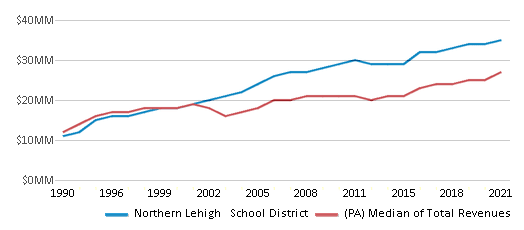
Spending
$32 MM
$38,578 MM
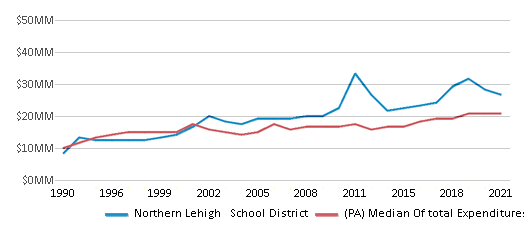
Revenue / Student
$22,078
$23,696
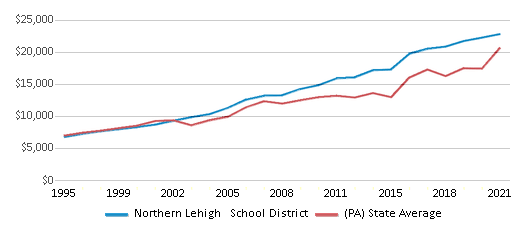
Spending / Student
$20,418
$23,119
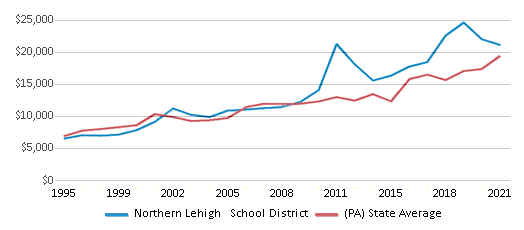
Best Northern Lehigh School District Public Schools (2025)
School
(Math and Reading Proficiency)
(Math and Reading Proficiency)
Location
Grades
Students
Rank: #11.
Northern Lehigh Sr. High School
(Math: 45-49% | Reading: 50-54%)
Rank:
Rank:
6/
Top 50%10
1 Bulldog Ln
Slatington, PA 18080
(610) 767-9832
Slatington, PA 18080
(610) 767-9832
Grades: 9-12
| 481 students
Rank: #22.
Slatington Elementary School
(Math: 34% | Reading: 51%)
Rank:
Rank:
4/
Bottom 50%10
1201 Shadow Oaks Ln
Slatington, PA 18080
(610) 767-9821
Slatington, PA 18080
(610) 767-9821
Grades: 3-6
| 493 students
Rank: #33.
Northern Lehigh Middle School
(Math: 12% | Reading: 47%)
Rank:
Rank:
3/
Bottom 50%10
600 Diamond St
Slatington, PA 18080
(610) 767-9812
Slatington, PA 18080
(610) 767-9812
Grades: 7-8
| 230 students
Rank: n/an/a
4055 Friedens Rd
Slatington, PA 18080
(610) 767-9827
Slatington, PA 18080
(610) 767-9827
Grades: K-2
| 378 students
Frequently Asked Questions
How many schools belong to Northern Lehigh School District?
Northern Lehigh School District manages 4 public schools serving 1,582 students.
What is the rank of Northern Lehigh School District?
Northern Lehigh School District is ranked #447 out of 675 school districts in Pennsylvania (bottom 50%) based off of combined math and reading proficiency testing data for the 2021-2022 school year.
What is the racial composition of students in Northern Lehigh School District?
75% of Northern Lehigh School District students are White, 18% of students are Hispanic, 4% of students are Two or more races, 2% of students are Black, and 1% of students are Asian.
What is the student/teacher ratio of Northern Lehigh School District?
Northern Lehigh School District has a student/teacher ratio of 14:1, which is equal to the Pennsylvania state average of 14:1.
What is Northern Lehigh School District's spending/student ratio?
The school district's spending/student of $20,418 is less than the state median of $23,119. The school district spending/student has stayed relatively flat over four school years.
Recent Articles
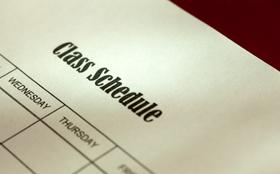
Year-Round Or Traditional Schedule?
Which is more appropriate for your child? A year-round attendance schedule or traditional schedule? We look at the pros and cons.

Why You Should Encourage Your Child to Join a Sports Team
Participating in team sports has a great many benefits for children, there is no doubt. In this article you will learn what those benefits are.

White Students are Now the Minority in U.S. Public Schools
Increasing birth rates among immigrant families from Asia and Central and South America, combined with lower birth rates among white families, means that for the first time in history, public school students in the United States are majority-minority. This shift in demographics poses difficulties for schools as they work to accommodate children of varying language abilities and socio-economic backgrounds.





